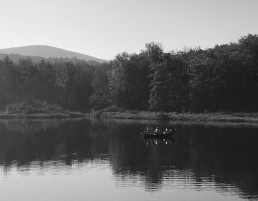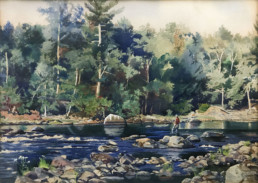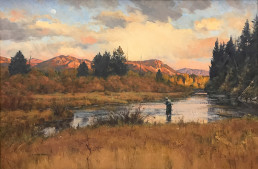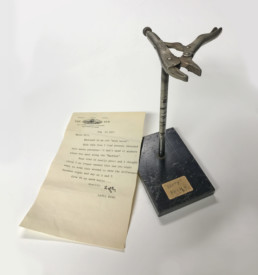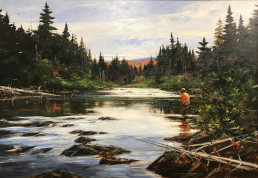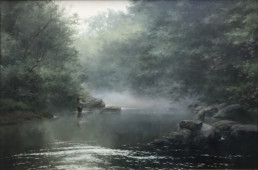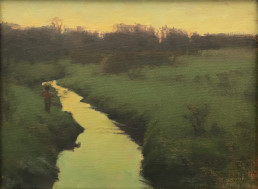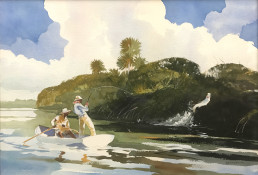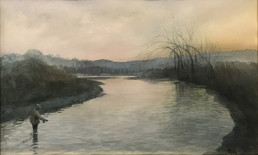Harmony in the Late-Twentieth and Early-Twenty-First Century
I have come to love not just the fish and fishing, but the islands themselves. As tangible places and private metaphors, these [islands] have captured part of me that wants always to be anchored to them, both physically and spiritually…No island ceases at the water’s edge when you wade on its flats, and when you walk on your own two feet, hunting in its shallows, no ocean calls you alien. Here…there is a symmetry of common existence unlike any that I have found yet…A symmetry that calls me now…seeking shadows and finding light, casting toward images with lives of their own, hunting in common for something that already surrounds us both.
—Ed Gray, 1997
On the eve of the late twentieth century, pop artist Roy Lichtenstein famously observed that the landscape experienced by most communities had become overwhelmed with advertisement, media, and consumer imagery. American art movements, such as pop art, embraced the artificial and unaffecting nature of modern culture. Unlike their contemporaries, sporting artists remained faithful to the representational angler within the wilderness, finding vision from the natural world and the American artists that preceded them. Reminiscent of the sentiments and harmonies found in nature, delineations of figures within the wilderness held continued relevance within society as the late twentieth century brought with it the perils of war, new environmental extremes, and an abundance of skyscrapers and pavement defining the landscape.
Today, finding time to slow down and reconnect with nature has become difficult for many between the rushed routines and pressures of modern digital culture. Angling has taken a leading role in facilitating meaningful relationships with land, water, and wildlife. With the foundation of numerous organizations, including Project Healing Waters, the May Fly Project, and Casting for Recovery, relationships with nature formed through angling have profound effects on many lives. Although the world may look different than it did more than one hundred years ago, modern innovation has helped connect anglers and nonanglers to experiences found outdoors across the globe.
Do not be fooled by images of the lone angler in the landscape: whether you’re casting on the water, tying flies, walking in the woods, or creating art, all outdoor enthusiasts participate in creating a larger community, linked through a common existence on Earth.


